BURIED ALIVE IN BROOKLYN!
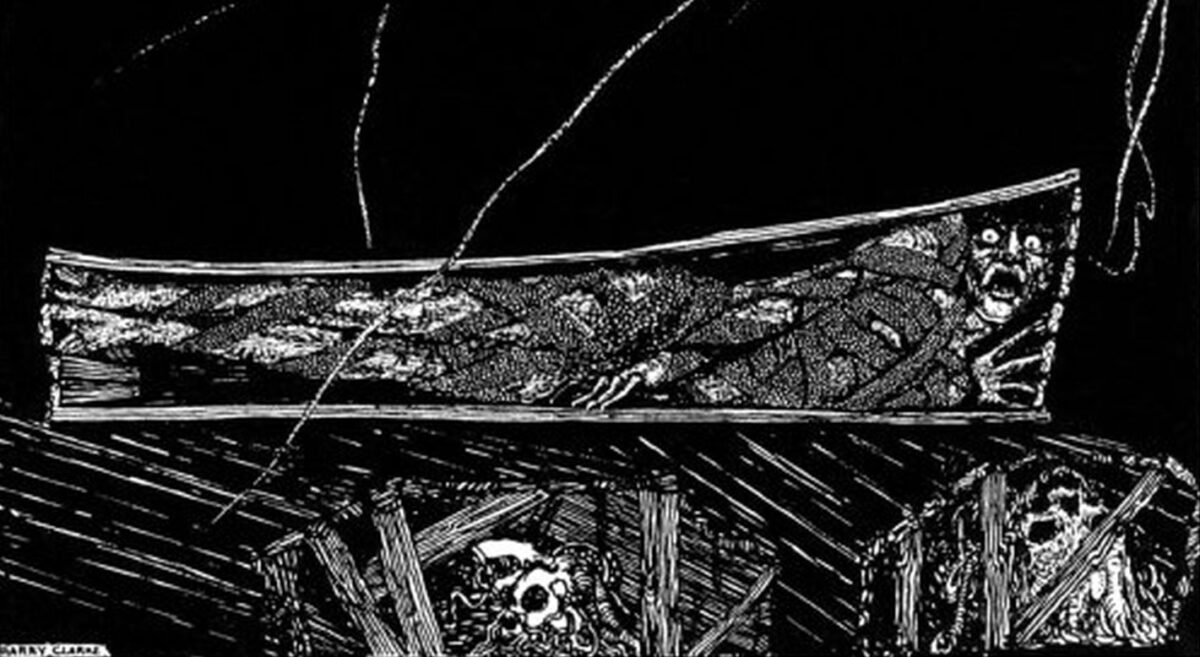
Brownstone Detectives investigates the history of our clients’ homes.
The story you are about to read was composed from research conducted in the course of one of those investigations.
Do you know the history of YOUR house?
********************************************************************************************************************************
Victorian Brooklyn was mortified at being buried alive.
If newspapers and patents together are any indication of an age, then we know the fear was strong.
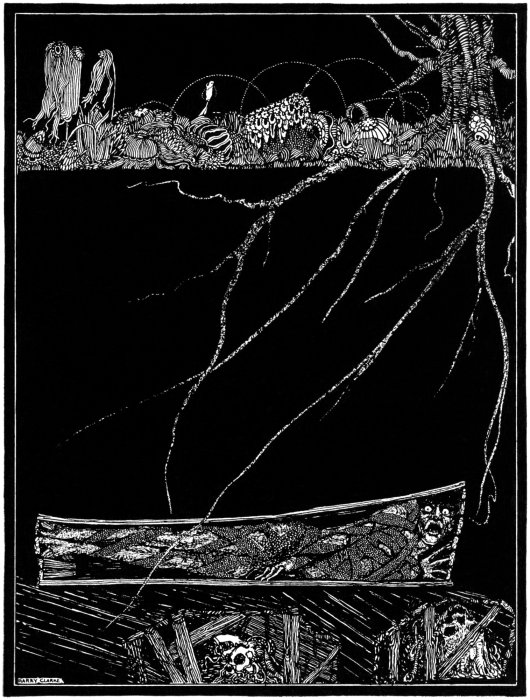 Research performed toward the end of the 19th century indicated that approximately 700+ cases of being buried alive had been documented. Such premature burials apparently took place in nearly every major city, in numerous small towns, and across the world.
Research performed toward the end of the 19th century indicated that approximately 700+ cases of being buried alive had been documented. Such premature burials apparently took place in nearly every major city, in numerous small towns, and across the world.
Whether they were occurring in droves or not, though, was of little import. The overriding principal here was public perception. And the perception was this:
Premature burials were happening ALL THE TIME.
And perhaps they were.
BROOKLYN & NEW YORK TESTAMENTS
Brooklyn’s most famous case of being buried alive involved a Manhattan woman by the name of Virginia McDonald, who, after she had perished, was brought to Brooklyn and buried in Green-Wood Cemetery.
The young woman’s mother, though, had “had a presentiment, shortly after her burial, that she was still alive.” The thought ate at the woman for some time until she decided to share her fears with her family members. They understandably attempted to assuage her, even resorting to joking with her when she could not be consoled.
Finally, to settle her doubts, they had the casket opened for their mother.
“The body was lying on the side, the hands were bitten, and there was every evidence of premature burial.”
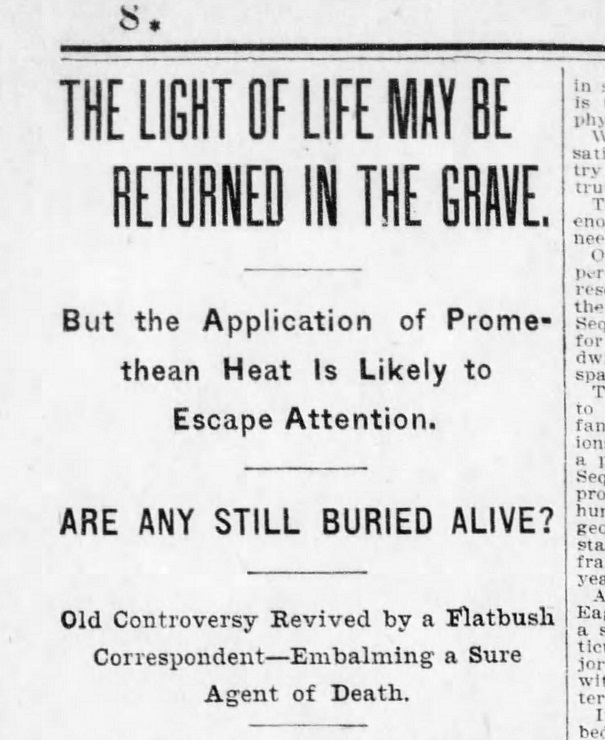
Another Brooklyn story concerned twin 4-year old girls in the late 1890s who were both discovered “dead” in their child-beds. There was no life in the children for several hours after their death.
After they were buried the following day, their mother had had a similar presentiment that her girls were not dead. Days later when they finally opened the casket, it was apparent that the girls had recovered, clutched at one anothers’ dresses in their fear, and, having used up their oxygen, finally died in one another’s grasp.
Another story occurring in Brooklyn was of a woman, the daughter of a baker on Court Street, who had “died” and was buried. When her sister returned to the city after the burial, she asked to “gaze upon” her sister’s face “one last time.”
Here, too, there “seemed to be evidence that life was not extinct when the body was placed in the coffin.”
It was stories like these which cast a nagging doubt in the minds of the living regarding whether their own loved ones had died the most horrible death upon awaking in their own coffins.
Worse still, they feared it should eventually happen to them.
Such fears brought many inventors to the table with ingenious ideas – which would, in truth, be little used – designed to prevent the deaths of people prematurely buried.
FIRST, ENSURE THE BODY IS DEAD…
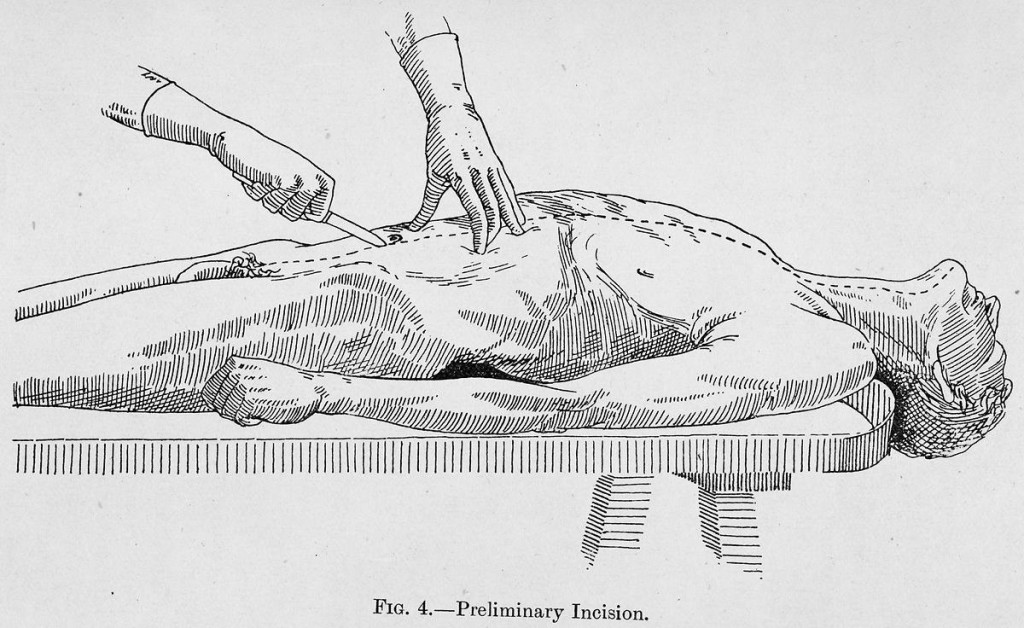
Many men, a number of them famous, like Hans Christian Andersen, who were drawing up their wills in the late 19th century, decided that they would prevent the possibility of their being buried alive by ensuring that the doctor who declared their death would take pains to prove that they had, indeed, expired.
Most of these wills demanded that, upon death, the main artery would be cut open, or that the body, itself, opened up to make sure of their death. Some of these testators even left a certain amount deposited in their name at a local bank to ensure that the operation was paid for – just in case.
If the surgeon, though, should fail, there was always the inventor.
PREVENTING THE BODY’S PREMATURE BURIAL – THE SAFETY COFFIN
Starting in the mid-19th century and going through the early 20th century, many patents were drawn up and filed with the U.S. Patent Office that would provide for a variation on the “safety coffin.” These included various devices designed to allow the poor soul, who found himself buried alive, to indicate to the world otherwise.
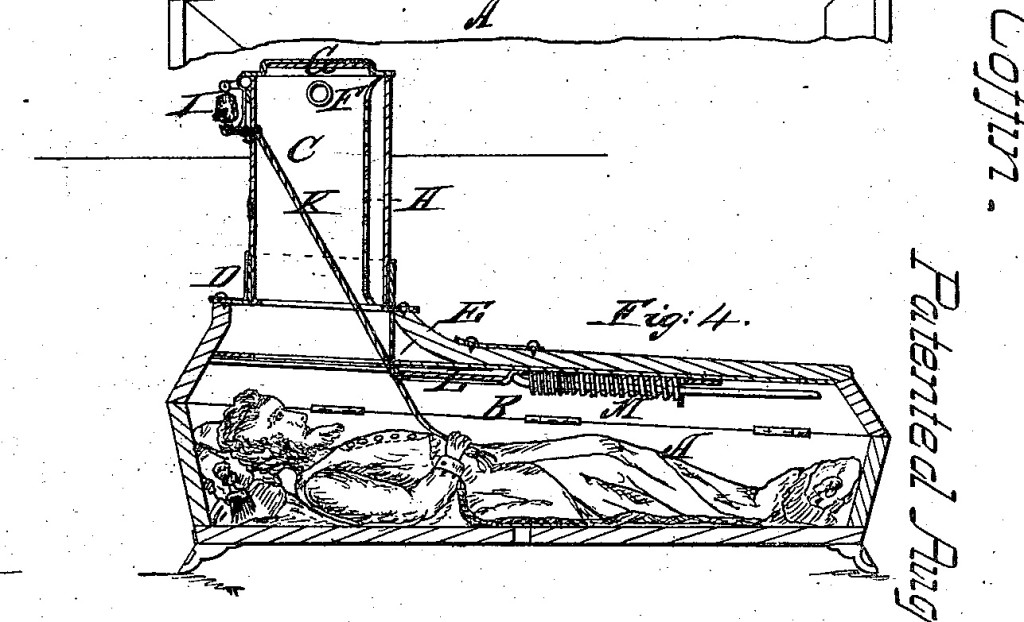
Most involved an alarm system of some sort and breathing tubes. Some were rather elaborate while others were simple in their design.
One of the more elaborate ones was developed in 1868 by a man from Newark, New Jersey, named Franz Vester. He invented the “Improved Burial-Case.”
According to his patent, the device worked as follows:
“The nature of this invention consists in placing on the lid of the coffin, and directly over the face of the body laid therein, a square tube, which extends from the coffin up through and over the surface of the grave, said tube containing a ladder and a cord, one end of said cord being placed in the hand of the person laid in the coffin, and the other end of said cord being attached to a bell on the top so that, should a person be interred ere life is extinct, he can, on recovery to consciousness, ascend from the grave and the coffin by the ladder; or, if not able to ascend by said ladder, ring the bell, thereby giving an alarm, and thus save himself from premature burial and death; and if, upon inspection, life is extinct, the tube is withdrawn.”
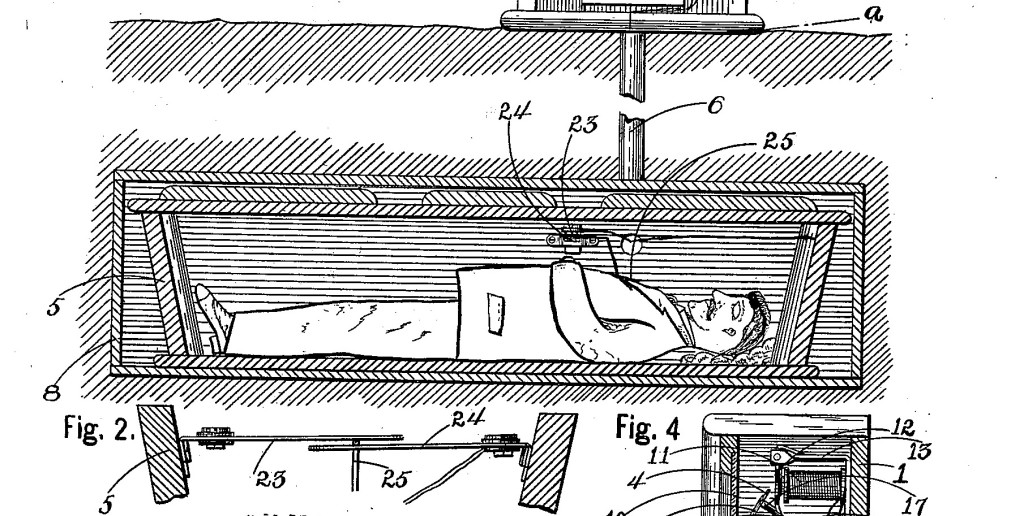
One of the simpler variations on the safety coffin was developed in 1900 by a Walter J. McKnight, of Buffalo, N.Y., who invented the “Electric Device for Indicating the Awakening of Persons Buried Alive.”
It utilized the installation of a breathing tube and a simple electric button that the presumably dead body would push. The button, attached to a device in a little house sitting atop the grave, would give the alarm that there was a living man beneath the soil at the specific location.
POSTSCRIPT
As practices in the medical industry improved, and embalming became more of a common practice, the general public began to fear the premature burial less and less. Becoming buried alive began quietly to slip into the sub-conscious of the collective American psyche. Although it would crop up from time to time during the 20th century, the fear never gained the same sort of traction that it had once had.
———————————————————————————————————————–
 Brownstone Detectives is an historic property research agency. Our mission is to document and save the histories of our clients’ homes. From our research, we produce our celebrated House History Books and House History Reports. Contact us today to begin discovering the history of your home.
Brownstone Detectives is an historic property research agency. Our mission is to document and save the histories of our clients’ homes. From our research, we produce our celebrated House History Books and House History Reports. Contact us today to begin discovering the history of your home.